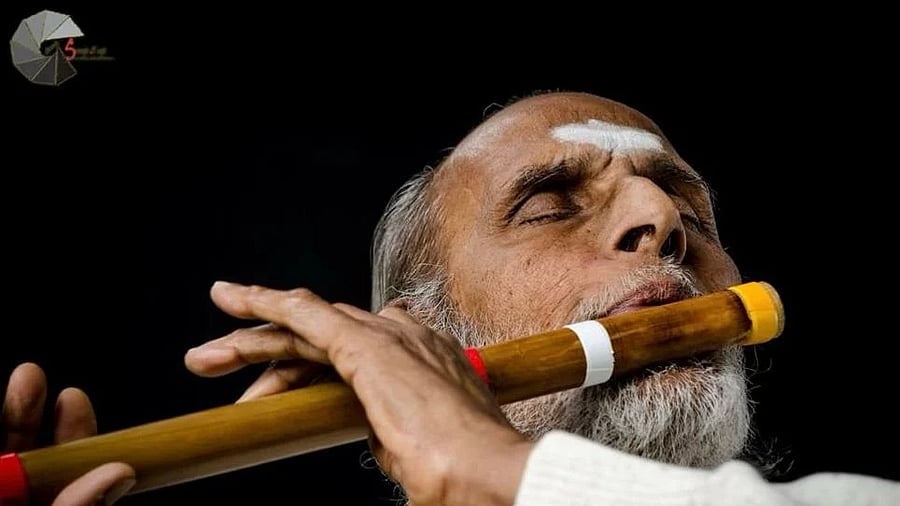
Credit: Special arrangement
At 92, renowned Karnatik flautist set to release full-length album Srinivasan Hariharan, one of India’s oldest Karnatik flautists, began his career at age nine. Today, at 92, he is set to release a new album titled ‘Gems of Carnatic Music’.
“Well, you see, I have always believed that music is not bound by years on the calendar. Even at 92, I feel the same excitement when I lift my flute to my lips,” he says.
Through his decades-long career he has performed across venues, from sabhas to larger stages. Some of his most noteworthy compositions include ‘Ashtalakshmi’ and ‘Dashavataram Ashtapathi’.
The new album is his first solo album and features traditional Karnatik music, with compositions from the likes of Thyagaraja, Shyama Shastri and Muthuswami Dikshitar. “I wanted listeners to feel the purity of those compositions. Just the ragas as they were meant to be heard,” the musician explains.
For Hariharan, stepping into a recording studio “was like visiting a distant cousin, familiar yet different”. “In live performance, a stray breath or a soft murmur can be forgiven. In the studio, everything is under the microscope. I decided early on, let us keep it true to a recital,” he shares. The album comprises 14 pieces. Each was recorded in a single take. “No stopping, no retake,” he reveals. The recording was completed in five hours. “I sipped water, had some fruits, and leaned on my yoga routine to keep alert,” says Hariharan, adding that the album will be released during Deepavali this year.
As a Karnatik musician who has been performing for close to eight decades, what is his take on the influence of digitisation and artificial intelligence on music? “I welcome any tool that helps preserve or share our music. Yet, at its core, Karnatik music is an affair of the heart. A machine can calculate tala cycles perfectly, but it cannot feel the yearning in Charukeshi’s dhaivatam or the devotion in Bhairavi’s gamakas. So long as we cultivate artistes who pour their lives into each note, our tradition will thrive alongside technology,” he observes.
He believes the key to making the genre relevant to younger audiences lies in collaboration. Groups like Seven Notes and Indian Raga, he points out, respect the soul of the kriti yet dress it in contemporary style. He also enjoys the work of Mahesh Raghavan, who brings ragas to a digital keyboard through GeoShred, a multi-touch musical instrument app. “Such ventures introduce our music to new ears without diluting its essence,” he explains.